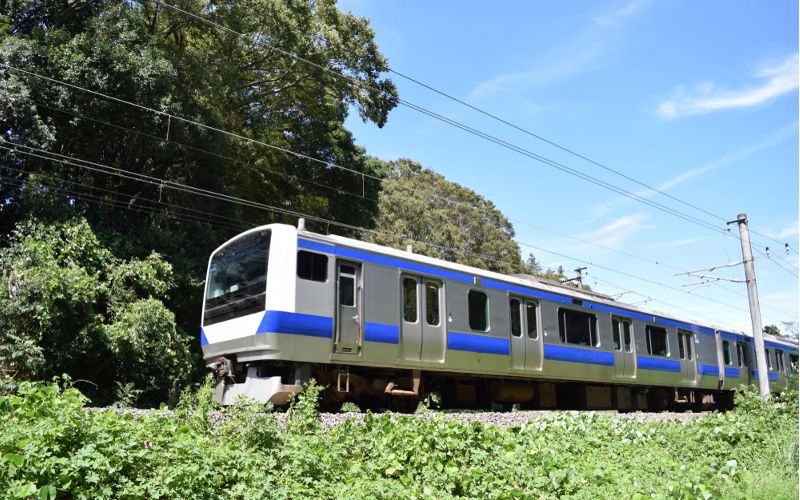Planning a trip to Japan and wondering how to navigate the vast transportation network efficiently? You might opt for one of 2 popular travel passes, the Japan Rail Pass (JR Pass) or the Suica Card, one of the prepaid IC cards in Japan.
Both offer unique advantages, but which one is right for your journey? On this page, we break down the strengths and differences of each and help you decide whether to order a JR Pass or Suica card, or both.
Table of Contents
Suica Card vs JR Pass: What’s Best for You?
Figure out how to get the most bang for your buck by checking out our Suica Card vs JR Pass table below 😉
| Suica Card | JR Pass | |
| Type of pass | Reloadable prepaid card | Unlimited travel pass |
| Coverage area | Valid in Tokyo, Osaka, and other urban areas; can be used on many transportation networks including buses, trains, and some shopping outlets | Valid on all JR national trains, local buses, and ferries, with a focus on long-distance and regional travel |
| Validity | No expiration; valid as long as it has a balance (Welcome Suica card for tourists valid for 28 days) | 7, 14, or 21 consecutive days |
| Purchasing and top-up | Available at ticket machines and convenience stores; can be topped up at these locations | Must be purchased before arriving in Japan; no top-up required |
| Ease of use | Pay per ride; touch-and-go at ticket gates; balance must be monitored | Unlimited use within validity period; no need to purchase individual tickets |
| Lines covered | Covers JR lines in urban areas, private railways, subways, buses; broader utility but pay per ride | Covers all JR lines nationwide, including Shinkansen bullet trains, JR buses, and some ferries |
| Seat reservation | Not available | Free seat reservations on most trains, including Shinkansen; recommended for popular routes or peak travel times |
| Discounts and benefits | Primarily a transportation tool; no direct discounts on attractions or accommodations | Offers discounts and benefits at various tourist facilities, hotels, and rental services |
Key differences between Japan’s travel passes

Comparing the Suica Card and JR Pass reveals distinct advantages and features. However, the many strengths of the JR Pass stand out, particularly:
- Purpose and use: The Suica Card is designed primarily for urban travel, while the JR Pass offers extensive coverage and unlimited travel, making it ideal for long-distance journeys.
- Validity and convenience: The JR Pass offers unlimited travel with its validity period, eliminating the need for the constant top-ups and balance checks required by the Suica Card.
- Coverage and accessibility: With nationwide coverage on JR lines, including bullet trains, the JR Pass provides extensive access to Japan’s diverse regions.
- Added value: The JR Pass offers several additional benefits, such as free seat reservations and discounts on hotels and tourist attractions, enhancing the overall travel experience and potentially saving you money.
Overall, while the Suica Card offers flexibility for local commuters and short-term visits, the JR Pass is advantageous for tourists aiming to cover more ground. It offers you the ease of unlimited travel with added perks.
Below, we’ll break down the differences in more detail.
Area coverage

The Suica Card is good for navigating within metropolitan areas like Tokyo and Osaka. It’s accepted on a variety of urban public transport networks, making it a good option for local travel.
On the other hand, the JR Pass offers unlimited coverage across Japan’s JR national railway, also including bus and ferry routes. It’s an ideal choice for long-distance travel between cities.
If you’re only planning to travel within one region of Japan, the nationwide JR Pass may not be the best fit for your trip.
In this case, you may wish to opt for a Regional JR Pass. These are cost-effective options for intensive travel within specific areas of Japan.
Validity
The JR Pass is available for either 7, 14, or 21 days of unlimited travel across all of Japan. This feature offers flexibility and freedom, removing the need to purchase tickets for each journey.
The Suica Card operates differently – its validity is tied to the balance you load onto the card. This means the card remains valid as long as you have funds.
However, it requires constant monitoring and topping up. Therefore, it’s less convenient for those on a tight travel schedule.
The Welcome Suica card exclusively available to foreign tourists is valid for 28 days from issue. However, at present, it can only be issued at Haneda Airport Terminal 3.
Convenience
Although it offers the convenience of touch-and-go payment on public transit, you constantly need to top up the Suica Card balance whenever it gets low. This could be a minor inconvenience.
On the other hand, the JR Pass offers great ease of use. A single purchase grants you unlimited travel, allowing you to explore Japan without the hassle of buying individual tickets.
Lines covered
The Suica card is accepted on JR East lines, including subways, private railway lines, buses, and even some shops. It covers the Greater Tokyo, Niigata and Sendai regions, but is also interoperable with IC Cards in other urban areas of Japan.
The JR Pass covers JR lines that span the entirety of Japan, including Shinkansen bullet trains, local trains, buses, and ferries. This extensive coverage makes it a great option for those looking to travel between multiple regions.
Seat reservations

A significant advantage of the JR Pass is the ability to make seat reservations at no extra cost. This ensures you have a seat on busy routes, especially helpful during peak travel seasons.
The Suica card does not offer this feature, as it operates on a pay-as-you-go basis. Therefore, it’s more suitable for spontaneous travel plans and short distances.
Benefits and discounts
Unlike the Suica Card, the the JR Pass comes with additional perks like discounts at:
If you’re visiting Japan with your kids, you can also get a JR Pass at a discounted price for children. This can make it an invaluable asset to maximize your family travel budget in Japan.
Conclusion
In conclusion, the choice between a Suica card and a JR Pass depends largely on the nature of your travel.
For extensive travel across multiple regions, the JR Pass offers unbeatable value and convenience. For local exploration within cities and short-distance travel, the Suica card provides flexibility and ease.
Assess your itinerary, compare the benefits, and choose the option that best suits your journey through Japan.
